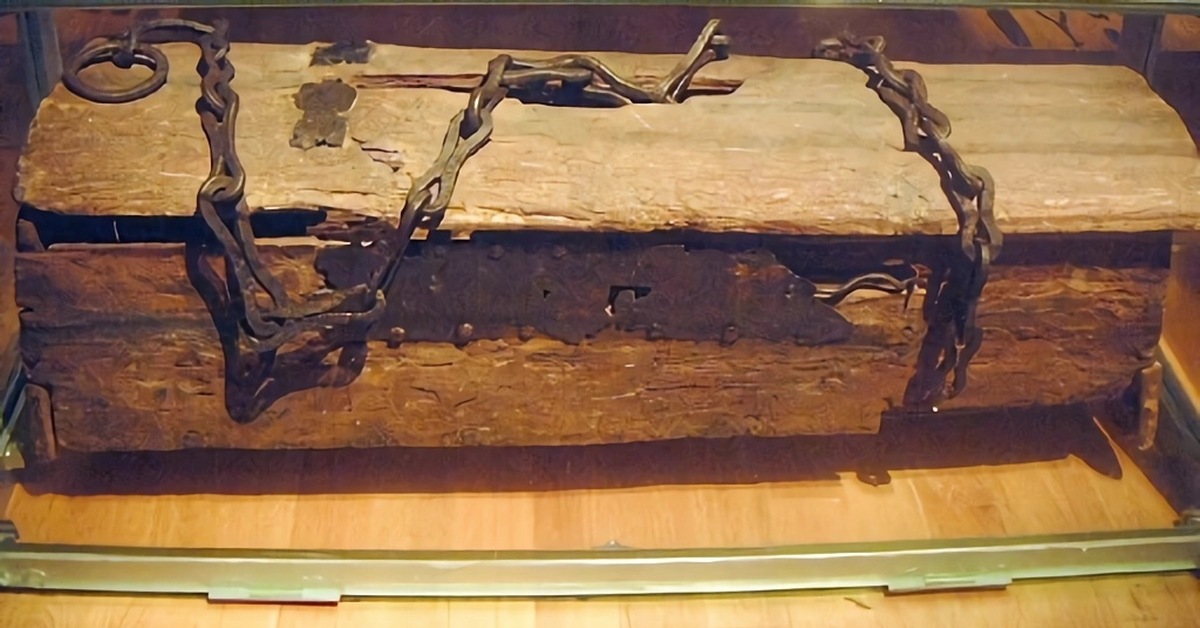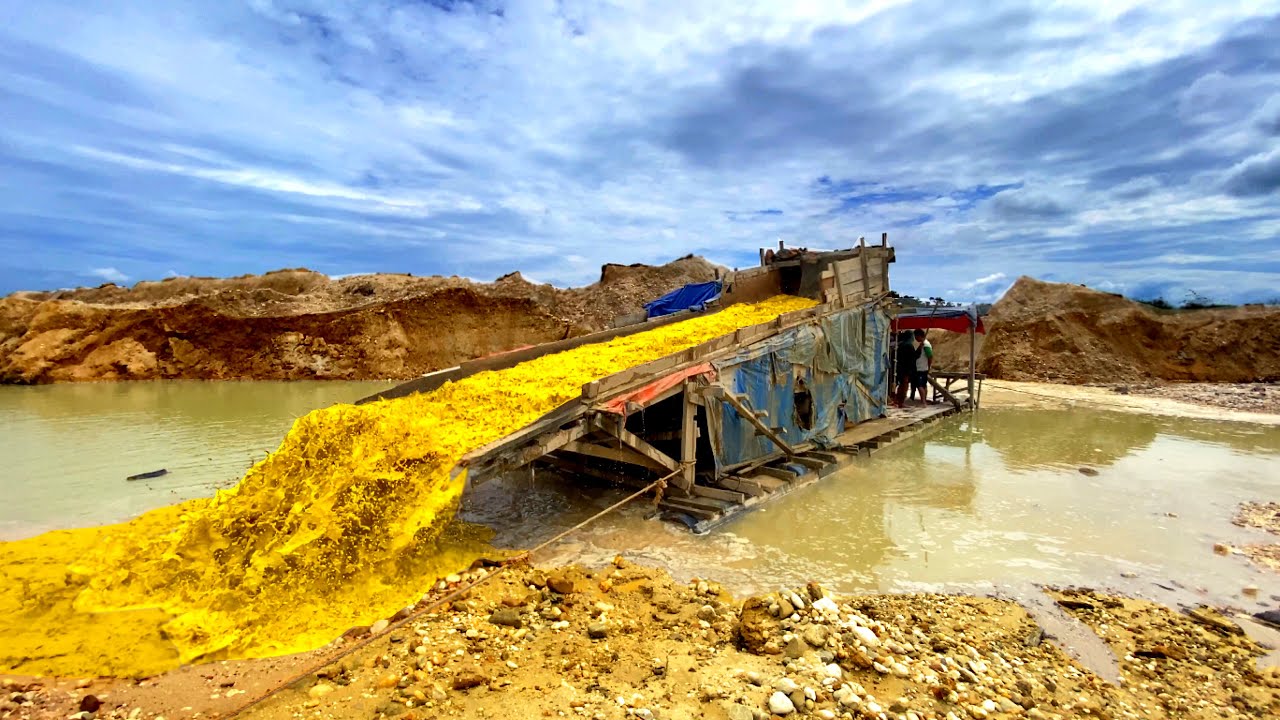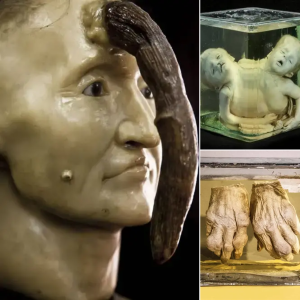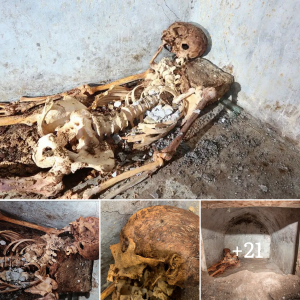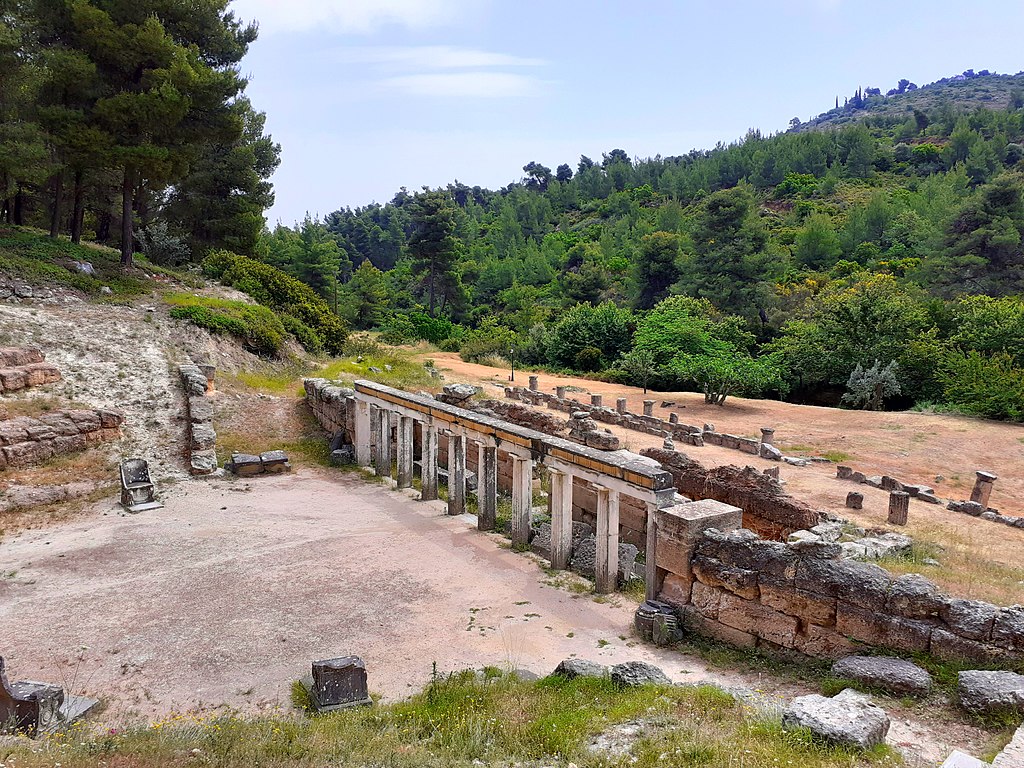
The Ancient Greek Amphiareion of Oropos. Credit: Γεώργιος Βέζας/ Wikimedia Commons/ CC BY-SA 4.0
The Amphiareion of Oropos, situated in the hills 6 kilometers (3.7 miles) southeast of the fortified port of Oropos in East Attica, is one of the lesser-known treasures of Greek antiquity.
The site of a holy spring where tales of heroes blended into myth, it is said that the earth once opened up and swallowed a chariot owned by Amphiaraos in that very spot. It became a site of worship and the place where athletic games took place once every five years.
A sanctuary was dedicated in the late 5th century BC there to the hero Amphiaraos, where pilgrims went to seek oracular responses to their questions, as well as heaingl from infirmities. The cult that grew out of the site was both public and private.
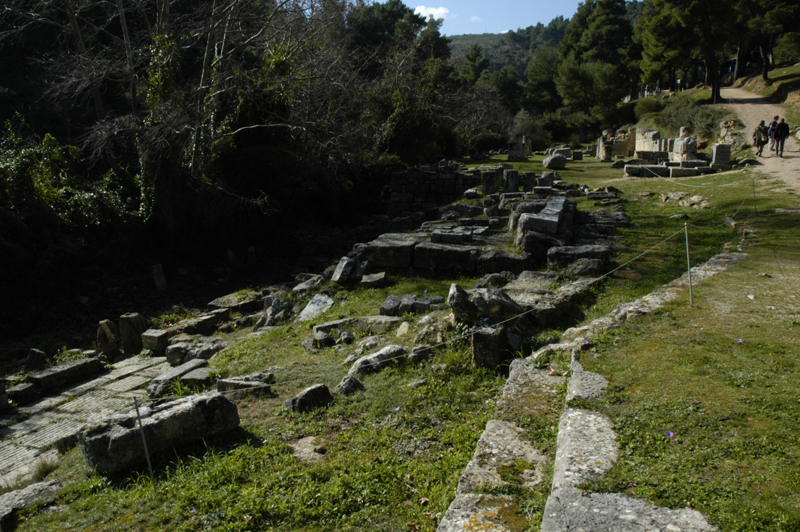
Southwestern view over the ancient Greek Amphiareion View SW across altar, theatral area, sacred spring, and temple. Credit: Nefasdicere J. M. Harrington, personal digital image at English Wikipedia/CC BY 2.5
The sanctuary became very busy during the 4th century BC, judging from the intensive building at the site, which came to include the Temple of Amphiaraos (with an acrolithic cult statue); a theater; a stoa, or roofed colonnade; clepsydra, or water clock, used to measure time by the passage of water; and domestic structures.
Its Temenos, or piece of land marked as part of the sanctuary, runs along 240 meters of a streambed.

The original outlay of the Amphiaraus theater, with its holy spring, altar, small temple and Temple of Amphiaraus, along with Mens’ baths. Credit: Nefasdicere J. M. Harrington, personal digital imageat English Wikipedia/CC BY 2.5
Located just 37 kilometers northeast of Athens near the modern town of Markopoulo Oropou, it is near the noted cable-stay Euripus bridge to Evia Island from the Greek mainland.
The sanctuary of the Amphiareion of Oropos was located near the border of Attica and Boiotia, the respective spheres of control of Athens and Thebes; control over the site passed back and forth between the cities until Alexander the Great destroyed Thebes in 335 BC.
The area first came into prominence after the hero Amphiaraos, who was a descendant of the seer Melampos, initially refused to participate in the attack on Thebes because he foresaw that it would be a disaster. This is detailed in the “Seven Against Thebes” of Aeschylus.
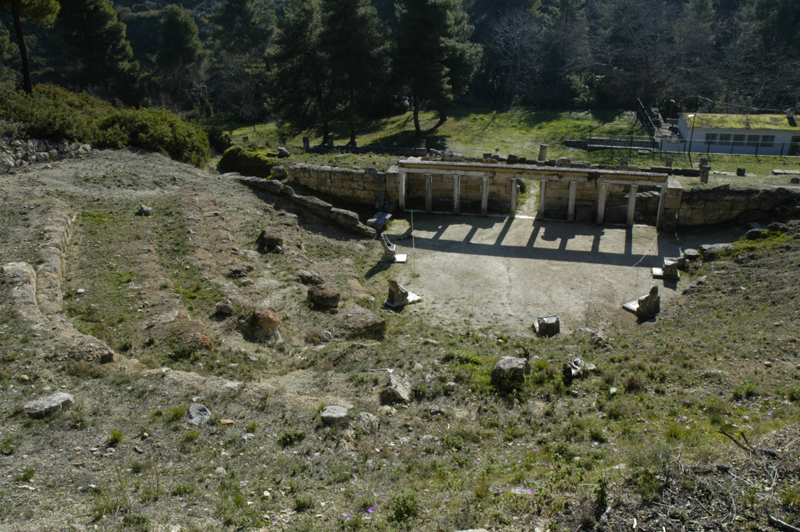
The Amphiareion from the top of the cavea. Credit: Nefasdicere at English Wikipedia J. M. Harrington, personal digital image/CC BY 2.5
In some versions of the myth, the earth opens up and swallows the chariot belonging to Amphiaraos, transforming him into a chthonic hero, a figure of the underworld.
Amphiaraos’ foresight may have in itself contributed to the area becoming known as a place where the future could be foretold. Herodotus relates that the oracular response of this shrine was one of only two correct answers to the test put to them all by the Lydian king Croesus.
Amphiaraos was worshipped there at the Temple dedicated to him, as well as at Rhamnous about 17.5 km southeast of the Amphiareion; he was also worshipped at Athens, Argos, Sparta, and other sites.
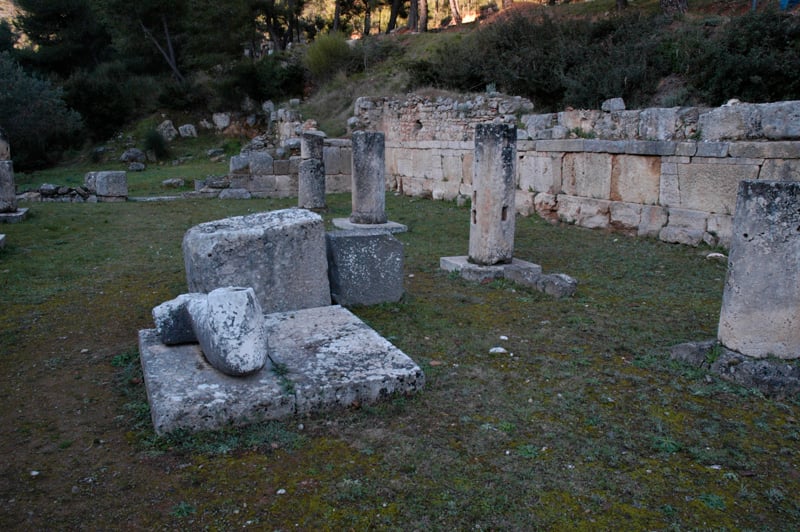
Interior view of the Temple of Amphiaraos showing interior colonnade and arm of an acrolithic statue. Credit: Nefasdicere J. M. Harrington, personal digital image at English Wikipedia/CC BY 2.5
There was an upswing in the sanctuary’s reputation as a healing site during the plague that hit Athens in the late 5th century BC.
There were many dedications from Greeks, influential Romans, and others over the centuries, many with inscriptions, at the Amphiareion of Oropos.
At the Amphiareion of Oropos, in addition to its presumed annual festival, Greater Amphiareia were celebrated in a festival of athletic games every fifth year. Two reliefs from the late 5th to the early 4th century BC seem to provide the earliest attestations of the festival games; there is even an inscribed catalogue of victors at the Greater Amphiareia that dates back to before 338 BC.
In 414 BCE, Aristophanes produced a comedy called Amphiaraos, of which fragments still survive as quotations.
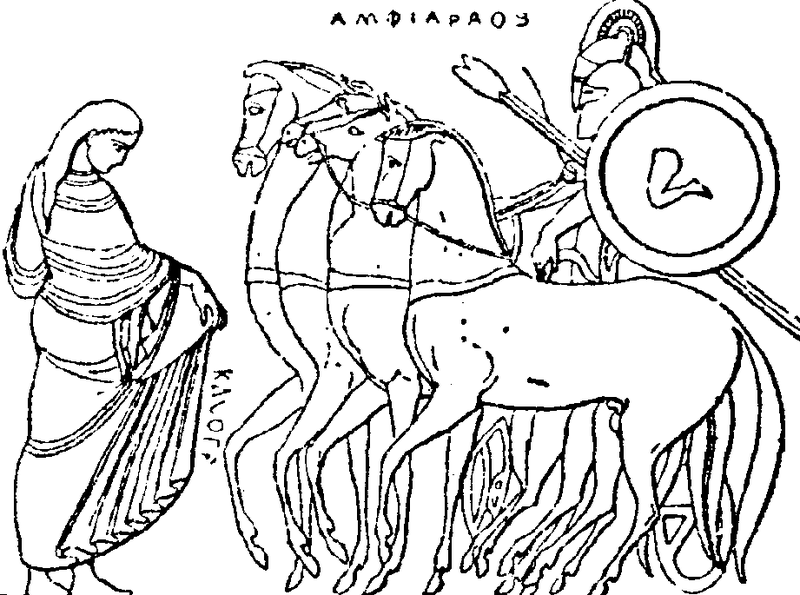
“An oracle of dreams”
The great geographer and writer Pausanias noted the cult figure in one of his works in the 2nd century AD: “I think that Amphiaraos most of all dedicated himself to interpreting dreams: it is clear that, when he was considered a god, he set up an oracle of dreams.”
Pausanias also added that:
“[T]he first thing is to purify oneself, when someone comes to consult Amphiaraos, and the purification ritual is to sacrifice to the god, and people sacrifice to him and to all those whose names are on (the altar), and–when these things are finished–they sacrifice a ram, spread out its skin under themselves and lie down waiting for the revelation of a dream.”

An inscription from the site, however, states that each man may sacrifice what he desires.
The Temple of Amphiaraos, constructed in the 4th century BC, was of an unusual Doric hexastyle in its plan, having six columns across the front façade between small projecting walls.
The antae were capped with half columns, giving the appearance of an octastyle façade. It measures 14 by 28m (46 by 92 feet). Behind the columns was a pronaos, leading into a cellar with two rows of five unfluted internal columns.
Alongside the second pair of columns back from the pronaos there was a base for the acrolithic cult statue of Amphiaraos–of which one arm remains in situ.
The baths at the Amphiareion were famous in antiquity. The locations of a stadion and a hippodrome, which may be part of the complex, are unfortunately unknown at the present time.
Water clock still has its bronze stopper
The sexes may have been segregated as may have been the case for the bath to the northeast of the stoa, which is traditionally called the women’s bath.
On the southeast side of the streambed opposite the sacred spring, there are extensive remains of domestic structures, as well as an unusually well-preserved clepsydra, which incredibly still has its bronze stopper. This artifact is especially important in the study of ancient methods of timekeeping in that it is an example of an inflow water clock.
Since an inflow clock measures time by the filling of a known volume from a constant rate of inflow, it is much more accurate than an outflow water clock in measuring the gradations between full and empty.
The clepsydra was composed of a central, square reservoir with a steep stairway on the south side to allow access to the bronze plug at the bottom of the reservoir.
Incredibly, the bronze stopper still survives today, leading the visitor to marvel at the seemingly unending historical treasures Greece offers in every corner of the country–even in out-of-the-way places which still need much further excavation and research.

